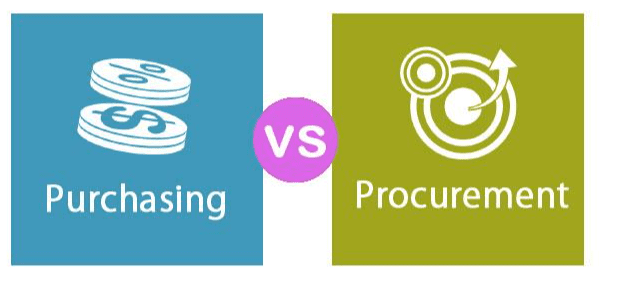The phrases procurement and purchasing are used and are sometimes confused with one another. But these two roles are quite different in their goals, the activities they handle, the people involved, and the results they produce.
A layperson might respond that procurement and purchasing are the same if you inquire about their differences. But, suppose you ask a procurement officer of an organization the same question. You will get more details about how and why there are so many distinctions between purchase and procurement.
Although some companies use one term instead of the other, failing to understand the essential distinctions between purchasing and procurement can cause a company to ignore crucial elements that could harm its bottom line.
What Is Procurement?
Procurement is the process of locating and buying the products and services a business needs to achieve its goals from an external entity like a supplier or a third-party vendor.
A strong procurement strategy can achieve a variety of goals. For instance, negotiating terms and prices might help a business save money. It can also guarantee the effectiveness, timeliness, and quality of suppliers.
Purchasing managers will make purchases of goods and services with constrained funds and diminished skills. They must choose to ensure that they get the top products and services.
The following are some of the tasks that procurement managers handle:
- Sourcing activities and tactical sourcing
- Negotiation and vendor management
- Choosing products and services
- Approving requests for organizational purchases
- Getting products and services
In a nutshell, procurement entails choosing what to buy when supplies are limited.
What Is Purchasing?
The purchasing process, a procurement component, is concerned with the transactional stage of acquiring goods and services. Creating purchase orders, ordering goods and services, or receiving goods and arranging payment are all activities related to the purchasing process. The ability to meet short-term goals for quantity, pricing, and timing is the main focus of purchasing.
A common purchasing process involves the following steps:
- Receiving a purchase requisition
- Evaluating received RFQs
- Creating and dispersing purchase orders
- Receiving goods and services
- Arranging payment to vendors.
Key variations Between purchasing and procurement
When a company is getting products and services, two processes are carried out:
- Procurement
- Purchase.
But their approach and method are very different. The following table highlights the main distinctions between procurement and purchasing:
Procurement:
- Procurement is the process of buying products and services.
- Actions are taken before, during, and following a purchase.
- Utilized in a manufacturing setting.
- Gives greater weight to an item’s value than to its price.
- Refers to a series of activities that identify and meet needs.
- Includes identifying needs, contract closure, and sourcing.
- Uses a proactive approach to identify and meet needs.
- Relational focuses on forging lasting connections with vendors.
Purchasing:
- Activities were related to purchasing goods and services.
- The simple act of purchasing a good.
- Utilized in a wholesale setting (external process).
- Focuses more on the item’s cost than its worth.
- Refers to the particular act of allocating funds.
- Includes placing orders, speeding up, and processing payments.
- Uses a reactive strategy to meet internal needs.
- Concentrate on transactions rather than vendor relationships.
- Read More About Deep Cleaning Services
- Read More About the Best Audit Firms in Dubai
- Read More About Fit Out Companies
- Read More About Dubai Uniforms Company
The distinction between procurement and purchasing includes several variations to those already discussed. Procurement concentrates on strategic, long-term goals like gaining a competitive advantage or aligning with corporate strategy or goals. Purchasing concentrates on tactical, short-term goals like completing the five rights in a transaction.
Technology in Purchasing and Procurement
The purchase of goods and services can include many decision-makers, agencies, and a significant amount of documentation because procurement and purchasing processes might overlap inside a corporation. This may result in decision-making delays, process bottlenecks, and increased procurement process intricacy. Many organizations use procurement software to store and manage crucial information to support supplier management and have an overview of discussions and projects.
By eliminating redundant data entry, optimizing the workflow procedure for approval, and boosting report output, procurement automation can assist procurement and buying professionals in streamlining the process of acquiring goods and services. You can improve the visibility of crucial information and help decision-making by automating vital tasks. Employees will be able to focus on key tasks that will offer more value to the company, such as developing a procurement strategy and strengthening supplier relationships, thanks to automated procurement technologies.

































